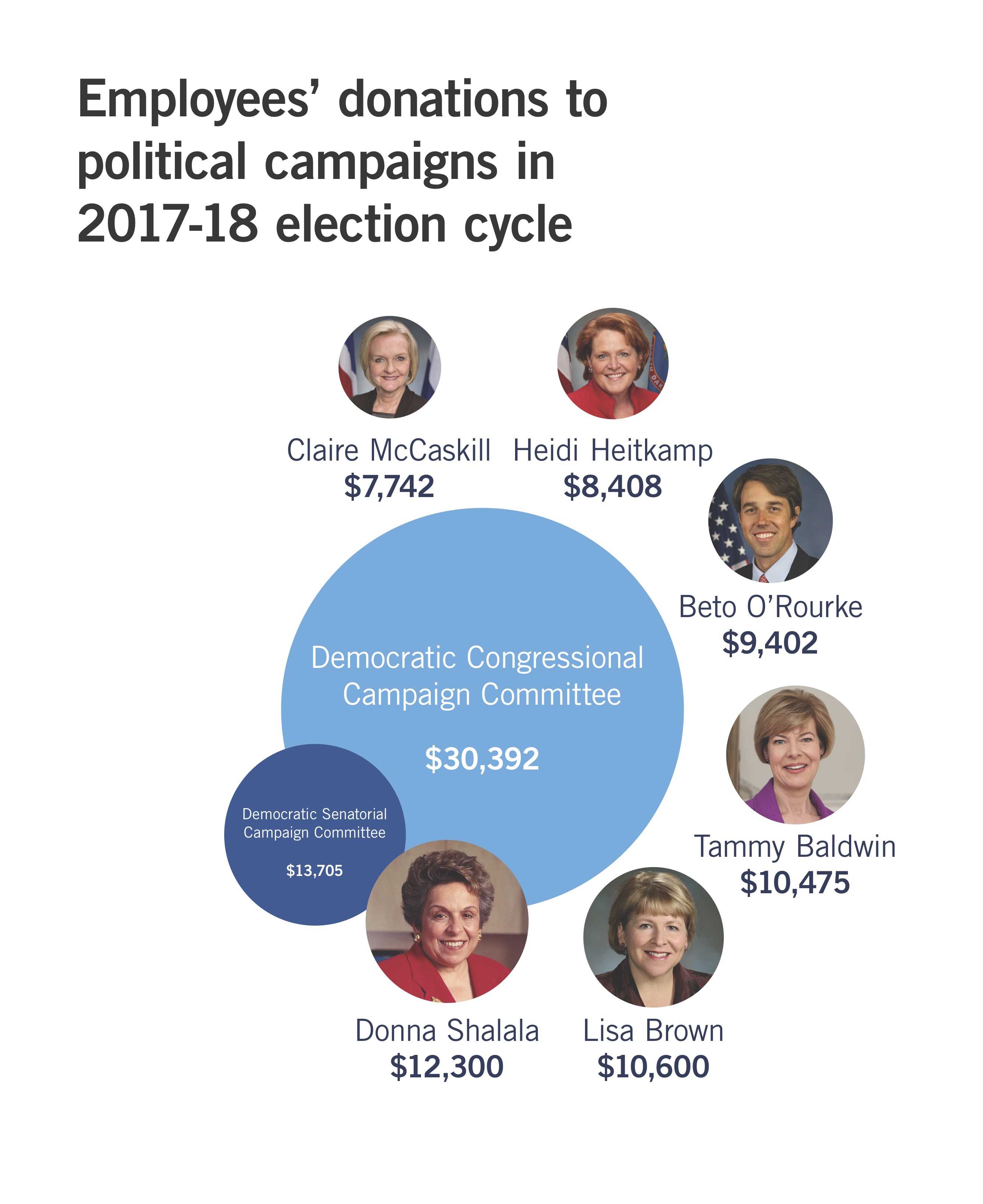In the last month before the midterm elections, GW employees donated thousands to some of the most competitive races in the country.
As of Nov. 4, two days before the election, employees gave $287,077 – adding about $100,000 to total contributions in a month’s time, according to federal election commission data compiled by the Center for Responsive Politics. The total is the most donated by employees during a midterm election cycle since at least 1990 – a record initially set when they had donated more than $170,000 in September.
Candidates in some of the most contentious races around the country in Texas, North Dakota and Missouri received more than $20,000 from individuals at GW.
Beto O’Rourke, a Democrat running for Senate in Texas, was the sixth-highest recipient of donations from GW last month garnering a total of $9,402. O’Rouke is running against incumbent Sen. Ted Cruz, R-Texas – a state that has historically voted for conservative candidates.
Sens. Claire McCaskill, D-Mo. and Heidi Heitkamp, D-N.D., both incumbents running in red states, received more than $7,000 and $8,000 from employees, respectively.
More than 80 percent of total contributions went to Democratic candidates.

Source: OpenSecrets
Other candidates like Donna Shalala, a Democrat running for the House of Representatives in Florida, and Doug Jones, a Democrat running for the Senate in Alabama, are listed as top recipients for donations and maintained their spots on the list since September.
University President Thomas LeBlanc donated $2,700 to Shalala’s campaign in October, adding to the $5,400 he donated earlier in the year. Shalala served as president of the University of Miami from 2001 to 2015, where LeBlanc served as provost before becoming president of GW.
Alumnus Gil Cisneros, a Democrat running for the House of Representatives in California, dropped out of the top 10 campaigns to receive donations from employees, where he stood at No. 3 in September. Cisneros, now at No. 13, has received more than $4,000 in donations from employees.
The Democratic Congressional Committee and the Democratic Senatorial Campaign Committee were the top two groups to garner donations from employees.
More than 1,500 employees had donated more than $170,000 to political campaigns by the end of September. Employees donated about $100,000 to candidates and political groups during the last midterm election cycle in 2014.
Political science experts said GW employees may feel inclined to donate to outside races during a particularly heated election cycle because they are geographically close to the federal government and see the effects of the current administration firsthand.
[gwh_image id=”1071216″ credit=”Source: OpenSecrets” align=”left” size=”embedded-img”][/gwh_image]
Jacob Neiheisel, an associate professor of political science at the State University of New York at Buffalo, said during the midterm election season, liberals in heavily Democratic areas like D.C. don’t have competitive races nearby, so they give their money to causes where the funds can be used to win toss-up races.
“We’re becoming a little bit more polarized as a country politically, and the stakes appear to be higher,” Neiheisel said. “And so you’ll have folks being more engaged.”
He added that GW’s location in the nation’s capital makes “the stakes seem higher when you’re closer to the seat of power than if you’re anywhere else in the United States, really.”
Michael Malbin, a professor of political science at the State University of New York at Albany and the co-founder and executive director of the Campaign Finance Institute, said donating to faraway races has become easier because of advancements in technology that have made digital donation platforms more accessible.
He added that because faculty are educated about politics and work in the heart of D.C., it’s easier to get involved in political races that are important across the country, not just in their backyard.
“What’s coming together is a high-importance election, high-intensity emotions or passion with platforms that make it easy to get the information you need to become involved,” he said.
Christopher Fauske, a professor of communications at Salem State University, said more individuals are donating small amounts of money in the midterm election cycle because of improvements in the digital donation platform ActBlue, which allows voters to donate with the click of a button. Information technology advancements in data collectors like Facebook have allowed fundraisers to hone in on their donors, he said.
“It’s getting easier and easier to micro-target the requests,” Fauske said. “So combine that with an increased awareness of the importance of this electoral cycle and it’s a no-brainer that you get a lot more money.”





